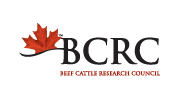Auditing beef and carcass quality every day
| Project Code: | BQU.09.18 |
| Completed: | In Progress. Results expected in March 2022. |
Project Title:
Developing a Canadian Total Quality Management System for Beef Processing
Researchers:
Klassen, Mark (CCA)
Jennifer Aalhus, Oscar Lopez-Campos, Manuel Juarez (Agriculture and Agri-Food Canada Lacombe), Horst Eger (Vision for You LLC)
Background
Canada’s beef industry has conducted Beef Quality Audits every few years starting in the mid-1990’s. The Audits provide very valuable information about what our industry is doing well in terms of producing quality beef carcasses (e.g. marbling, tenderness), and where it can do better in terms of avoiding some of the estimated $200 million annual cost of quality defects such as bruising, tag, liver condemnations and injection site lesions. However, doing these audits on a five-year basis means that we are often learning about problems that started quite a while ago. However, new technologies may provide the opportunity to track carcass and offal quality (and defects) on an ongoing basis and allow us to recognize and respond to emerging quality challenges and opportunities in a timely manner.
Objectives
-
Carcass: Hide-on and hide-off carcass cameras as described below;
a) Hide-on Carcass: Use images from a hide-on camera to develop initial algorithms to recognize hide color, score tag (mud), detect horns, and potentially read brands.
b) Hide-off Carcass: Use images from a hide-off camera to detect critical bruising and injection site lesions, carcass muscling and hump height classification.
-
Ribeye: Develop and/or incorporate equations measuring or predicting carcass/primal yield, ribeye marbling texture and blood splash, dark cutting, tenderness and yellow fat into a new Carcass Information System (CIS) Module.
-
Offal: Develop an automated liver abscess camera to classify livers as edible or inedible and share this through the CIS mobile app along with benchmarking information. Examine if X-ray imaging of skulls can automate dentition checks and potentially predict animal age better.
-
Quality Verification: test whether the new CIS Quality Verification Module can enable branded beef programs to verify specific beef quality attributes.
-
Quality Management: use the new CIS Quality Management Module to help plants and feedlots exchange carcass and offal related information that they can discuss with their nutritionist, veterinarian and other production specialists.
What they will do
This team will investigate whether x-ray images of the skull can predict animal age at the slaughter plant. They will also further develop grading and photographic imaging to automatically collect hide color, tag, horn, brand, bruise, injection site lesion, muscling, hump height, liver abscess, and age data. They will add new programs evaluating marbling texture, blood splash, dark cutter, yellow fat and tenderness into the e+v ribeye camera. The systems developed will allow the information they gather to flow back to feedlots.
Implications
Tracking carcass quality and defects on every animal, every day, and feeding that information back to cattle producers will help Canada’s beef industry fix emerging problems more quickly and provide more rapid feedback encouraging the production of superior high-quality beef carcasses.






